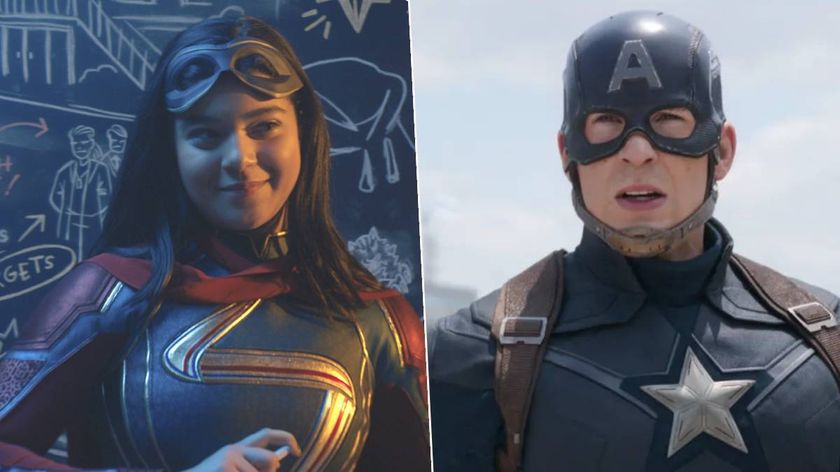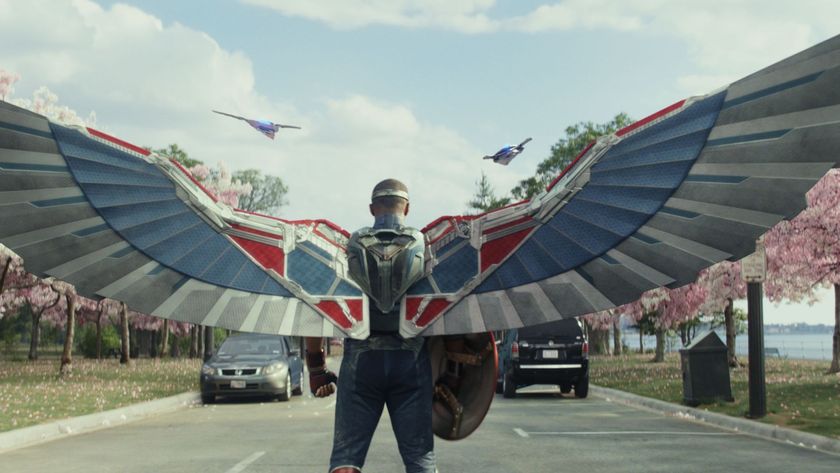22 fantasy worlds built for TV
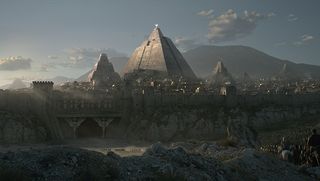
A tour of TV fantasylands
But its far from the only show on TV to create an alternate fantasy world. So here we look at some alternate destinations you might want to visit if you have a magic mirror or an enchanted wardrobe handy. Weve concentrated on live action series because cartoons like He-Man could take up a whole feature by themselves Now theres an idea.
Were also not including fantasy series based on classical mythology, such as Hercules, Xena and Atlantis, because we set the rules, okay? Now, if youll just step through this mirror
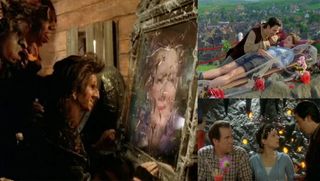
The Nine Kingdoms (in The Tenth Kingdom)
The Tenth Kingdom is actually Earth in this lavish mini-series from 2000. The other nine are all fantasy realms, inhabited by out-of-copyright fairytale characters waiting for someone to create Once Upon A Time Cinderalla, Snow White, The Huntsman, The Evil Queen. Its actually quite fun, and often inverts your expectations of the characters. A little twee in places, surprisingly dark and witty in others, it features trolls with the catchphrase Suck an elf. It also has one of the most amazing opening title sequences ever.
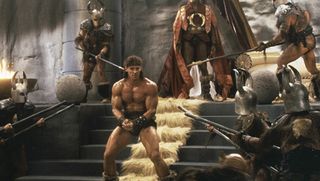
Cimmeria (in Conan The Adventurer)
Conans homeland as created by Robert E Howard is central to this lamentable 1997 one-series wonder. Its never looked less impressive and more clichd. And neither has Conan himself, here player by former competitive body builder Ralf Mller, who you have forgotten from other roles where having muscles is more important than having expressions (Cyborg, The Scorpion King).
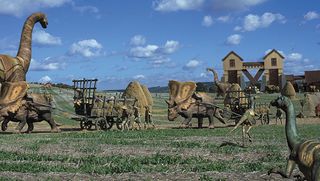
Dinotopia
This ones a little different. No dragons but lots of thunder lizards. Dinotopia was a four-hour 2002 mini-series from Disney based on the books by James Gurney. If youve never seen it (or read the books) you can possibly guess from the title what the USP of this particular fantasy land is the biggest piles of manure youve ever seen! I jest these dinos seem very well house trained. Sadly the series lacks some of the steam-punk aesthetic of the books.
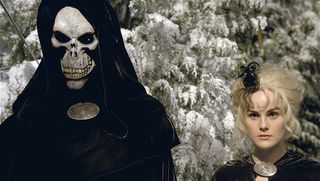
Discworld
Sky One has now produced three live-action adaptations of Terry Pratchetts Discworld novels; Hogfather, The Colour Of Magic and Going Postal. Theyve been lavish, costly productions and decent enough in themselves. But visually the on-screen Ankh-Morpork feels a little prosaic next to Pratchetts dense whimsical descriptions of Discworlds city-state with it bizarre institutions, winding streets, oddball characters and melting pot of cultures. But its still cool to see a flat world balanced on the backs of four elephants which are in turn standing on the back of a giant turtle, the Great A'Tuin.
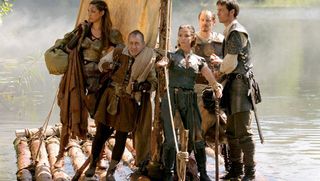
Izmir (in Dungeons and Dragons Wrath of the Dragon God)
If you thought the Dungeons And Dragons movie was bad, this 2005 mini-series is even worse, and it doesnt even have Jeremy Irons and Tom Baker overacting wildly to keep you amused. Its crazy that a franchise which was synonymous with fantasy in the 70s and 80s has yet to produce a decent live action spin off (the cartoon wasnt too bad though). The only actor returning from the film is Bruce Payne as the evil Damodar. The script is full of phrases like the Orb of Faluzure, the Pool of Sight, the Temple of Obad-Hai and the Old Rope of Desperation (I made that last one up). This is The Lord Of The Wrongs.
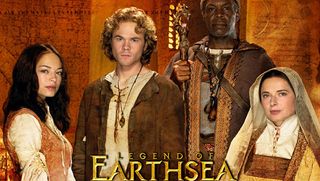
Earthsea
Ursula K Le Guin hated this mini-series based on her novels, but she had to stand in a very long queue to register her disapproval. Fans despised the changes made to her multi-layered tales of wizards, dragons and religion. Of course those who hadnt read the books were free from prejudice and could judge the show on its own merits; and verily they did find it to be a clichd load of old toot. Le Guin was so traumatised shes written articles about the experience with titles like, A Whitewashed Earthsea and Frankensteins Earthsea.
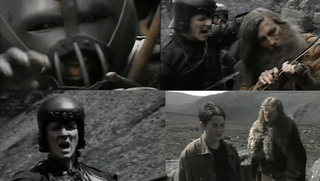
Elidor
Based on the book by Alan (The Owl Service, The Weirdstone of Brisingamen) Garner, Elidor was a six-part 1995 childrens series from the BBC. The novel is almost a grittier version of Narnia with Cornwall replaced by Manchester, snowy forests replaced by dingy castles and the Christian parallels replaced by Celtic mythology. So, of course, the BBC filmed much of it in a quarry, because thats what the BBC did back then. However some moody camerawork, well-designed costumes and a bunch of kids who didnt sound straight out of stage school helped make this a superior childrens show of the time.
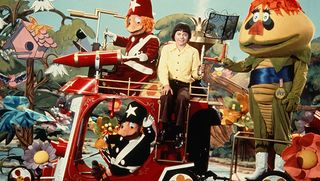
Living Island (in HR Pufnstuf)
Eek! Its scary evil Muppets! There are a lot of childrens shows from the 60s and 70s that we look back on and half-jokingly suggest they were made with the aid of illegal substances. Few, though, come quite as close to the ultimate trip as HR Pufnstuf, which seemed to create whole new colours hitherto unknown to man. Jack Wild (the Artful Dodger in Oliver!) starred as a shipwrecked boy who washes up on The Living Island, which has a friendly dragon for a mayor, talking trees and singing frogs. Theres also a stripey-stockinged witch called Wilhelmina W Witchiepoo who flies around on a jet-propelled broom with a sidecar. Some viewers are still being treated for the after-effects of watching it. (Creators Sid and Marty Krofft went on the produce the more SF-tinged Land Of The Lost.)
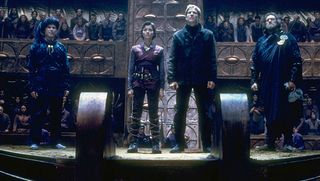
Giants' World (in Jack and the Beanstalk The Real Story)
Brian (son of Jim) Henson directed this radical makeover of the well-known fairy tale for a 2001 mini-series which showed the giants in a far more sympathetic light. It starts in the present day when a company boss unknowingly a descendant of the original Jack discovers that some of his workmen who are building a casino have uncovered the fossil of a giant. Pretty soon hes shimmying up a beanstalk to a supersized medieval-style fantasy land. Complicating matters is the fact that one day spent in Giants World equals one year on Earth. Plus, you get James Corden as a little giant. Aw, cute.
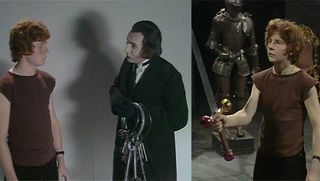
The Castle (in King Of The Castle)
Not long after young Americans had been traumatised by the DayGlo dragon in HR PufnStuf, erstwhile Doctor Who writers and K9 creators Dave Martin and Bob Baker decided to freak out UK children. The starting point for 1977s King Of The Castle a seven-part series for ITV seemed to be Hey, you know how creepy the Child Catcher was in Chitty Chitty Bang Bang? What if we made a show about him, and his family and where he lives? It starts with a boy taking a lift ride in his block of flats, only when the doors open hes in castle co-designed by MC Escher and Hieronymus Bosch. This show is seriously weird. Bizarrely, the cheap 70s blue screen effects only add to a cloying atmosphere of oddness.
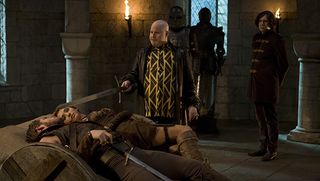
Hessemeel (in Krod Mandoon And The Flaming Sword Of Fire)
The guy who is now Robin Hood in Once Upon A Time (and was once Tegs in Grange Hill would probably not like us to remind you of this humour-dodging 2009 BBC2 sit-com in which he starred. He was crud Sorry, Krod, leader of a band of rebels that included an oversexed amazon, a magician with a quick tongue and no real magic and Pigsy from Monkey (or at least, thats what it looked like). Theyre in a battle against the evil Chancellor Donold David Dongalor (Matt Lucas). No, scratch that. Theyre actually in a battle against the kind of toilet humour the Carry On movies would have deemed too lowbrow. Yes, they do indeed have a gag concerning a character being turned into a dog and licking its testicle.
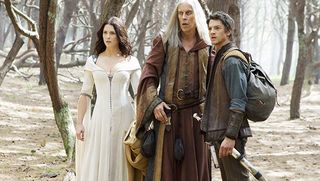
Westland (in Legend Of The Seeker)
This series, which ran for two seasons from 2008 to 2010, was based on the Sword Of Truth series of novels by Terry Goodkind. Before Game Of Thrones it was TVs most serious attempt to transfer epic fantasy to TV. Sadly, as soon as Game Of Thrones started it looked about two centuries out of date. While it was airing, though, it had its fans. It actually took place across a number of fantasy lands Westland, the Midlands and D'Hara all of which looked a little like Middle-earth or ancient Greece because it was filmed in New Zealand. In fact, in tone it was very much like a less campy Hercules or Xena. The series followed the adventures of a "Seeker of Truth", a Confessor, a wizard (with the Scrabble-busting name Zeddicus Zu'l Zorander) and a Mord-Sith (dont ask) as they defended the realm against an evil chap called Darken Rahl and his army. Prophecies ahoy!
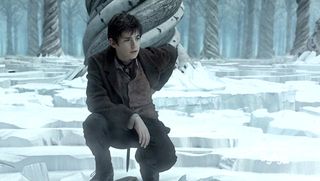
Neverland
Syfys 2011 mini-series came front-loaded with a double whammy of publicity jargon, prequel and reimagining. Yes, this is story you needed of how a young urchin called Peter lost his shadow and decided not to grown up. The Neverland we see here is suitably populated by pirates, squaws, crocodiles, fairies and English character actors (Charles Dance, Rhys Ifans and Bob Hoskins reprising his role as Smee from Hook). But theres something an apocalyptic version of Narnia to the design and photography that feels at odds with most othet screen versions of the tale. Did we really need a gritty take on Peter Pan?
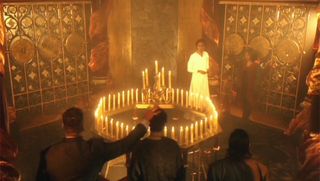
London Below (in Neverwhere)
Neil Gaiman created this six-part 1996 series for BBC mainly set in an alternative London that exists side-by-side with the real city, where there actually does exist an Angel Of Islington, a Knight on a Bridge and Earl with a Court. Shame we never got to see the Elephant and Castle. Its all wonderfully quirky, full of colourful characters and deliciously intriguing ideas. Oh, and ill-advised hairstyles, especially Peter Capaldis helmet of curls. BBC budgets mean that it never quite transports you to another world, and the Beast of London is reduced to a bull that just stands around a lot. But there are moments when it captures a sense of true wonder, especially a quite extraordinary bazaar (the floating market) that takes place on HMS Belfast and rooftops meeting that show familiar landmarks from new perspectives.
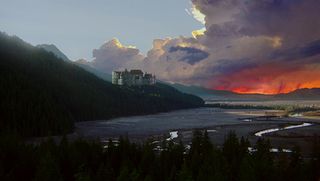
The Enchanted Forest (in Once Upon A Time)
While Game Of Thrones is getting all gritty and sweaty and bloody, its only main fantasy land rival in the ratings, ABCs Once Upon A Time is happy to deal in whimsy and soap opera. The show flits back and forth between the real world town of Storybrooke (sounds a little bit like story book, geddit?) and the Enchanted Forest (although as the seasons go on, other fairy tale lands are available). Originally all the fairytale characters Snow White, Pinocchio, Prince Charming, the Seven Dwarves were amnesiacs exiled to Storybrooke but a curse has been lifted and now they flit back and forth. And the more they do the more the writers are introducing some distinctly non-trad fairy tale character to the mix, including Mulan and Frozens Elsa. It could all end some of meta crisis.
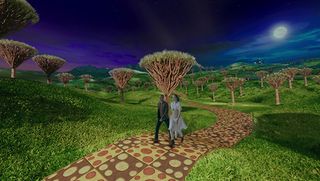
Wonderland (in Once Upon A Time In Wonderland)
Once Upon A Time also spawned a spin-off, Once Upon A Time In Wonderland which took place in Lewis Carrolls bizarre world of White Rabbits, hookah-smoking caterpillars and heartless queens. Aided by some quite stomach-churningly psychedelic CGI the mini-series was a wonderful slice of weirdness but was a bit of a ratings flop, sadly.
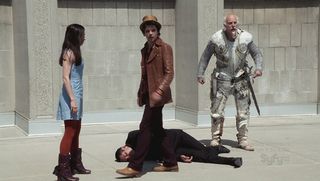
Wonderland (in Alice)
Another Syfy makeover, this time of Alice In Wonderland. Like Tin Man the impetus for the show appears to be, Lets have people in silly costumes wandering around forests a lot. Alice benefits from a spirited performance from Primevals Andrew Lee Potts as he Mad Hatter, but a romance between the Hatter and Alice feels like a hideous Hollywood invention from writers schooled to believe that nobody will watch anything without a bit of sexual tension. The show does have a fantastic Jabberwocky, though.
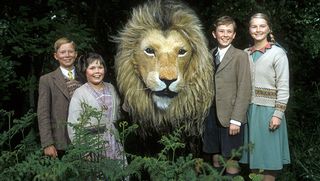
Narnia (in The Chronicles Of Narnia)
One of the biggest mysteries of UK childrens TV in the 80s was why the BBC chose an actress to play Lucy in The Lion, The Witch And The Wardrobe who couldnt say Aslan. A whole generation grew up assuming the lion was called Athlan. And that he couldnt walk. This being before the Beeb could afford CGI Aslan is a great-looking but very static lion. The Beeb adpated four of the novels The Lion, The Witch And The Wardrobe, Prince Caspian, The Voyage Of The Dawn Treader and The Silver Chair so theyre still beating the film franchise for the moment. Given the meagre budget, theyre actually pretty impressive attempts to realise Narnia on screen. Certainly the snowy Narnia of the first book comes across well. The talking beavers, not so much
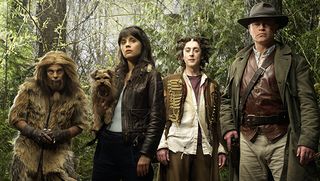
Oz (in Tin Man)
Syfy reimagines The Wizard Of Oz, so yes lots of silly costumes, lots of forest walks. There are also some surreal Matrix-style moments and a grim thread running through it that sits awkwardly with the more outlandish elements. Zooey Deschanel stars as DG (Dorothy Gale), with Alan Cumming as the Scarecrow and Neal McDonough as a former "Tin Man" law enforcer who was locked in an iron suit for years as punishment. Thats nothing to how they re-invent the cowardly lion It all feels more than a tad overthought, change for changes sake.
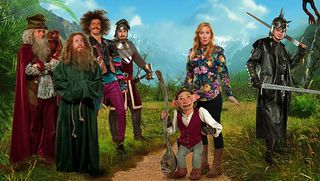
Yonderland
Yonderland is Fraggle Rock meets Monty Python via Labyrinth. Made for Sky One, series one aired in 2014, with a second on the way. Its a sit-com with puppets about a listless mum whos transported to a magical world because shes the "chosen one" but dont worry, clichs are merrily inverted and perverted here. Created by the team behind Horrible Histories its that same mix of silliness, wit and knowing humour that genuinely has something to appeal to everyone. Even cynical fantasy fans.
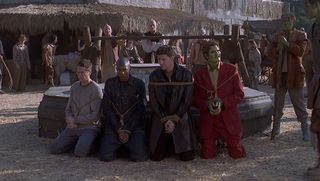
Plrtz Glrb (in Angel)
Okay, okay, Plrtz Glrb only featured in a few episodes on Angel at the end of season two. But it was such as unexpected plot detour when Angel and co took a trip to karaoke-singing demon Lornes home dimension that it deserves a mention. Especially as it was a full on medieval style fantasy world where Lorne could have be decapitated and survive. And because it featured Buffyverse creator Joss Whedon in green make-up doing a dance of joy like hes been possessed by John Cleese.
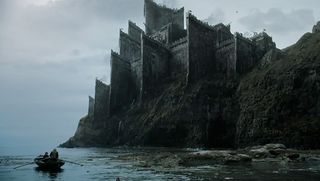
Westeros (in Game Of Thrones)
Oh yeah, and then theres Westeros, Essos, the Free Cities and the other bits of the world George RR Martin created for A Song Of Ice And Fire which has landed on our screens as Game Of Thrones. It is, without doubt, the biggest, most multicultural, most politically complex, most well developed, diverse and believable fantasy lands ever created for TV. Plus it has dwarves and dragons. BEST. OF. ALL. WORLDS!

Dave is a TV and film journalist who specializes in the science fiction and fantasy genres. He's written books about film posters and post-apocalypses, alongside writing for SFX Magazine for many years.
Most Popular





